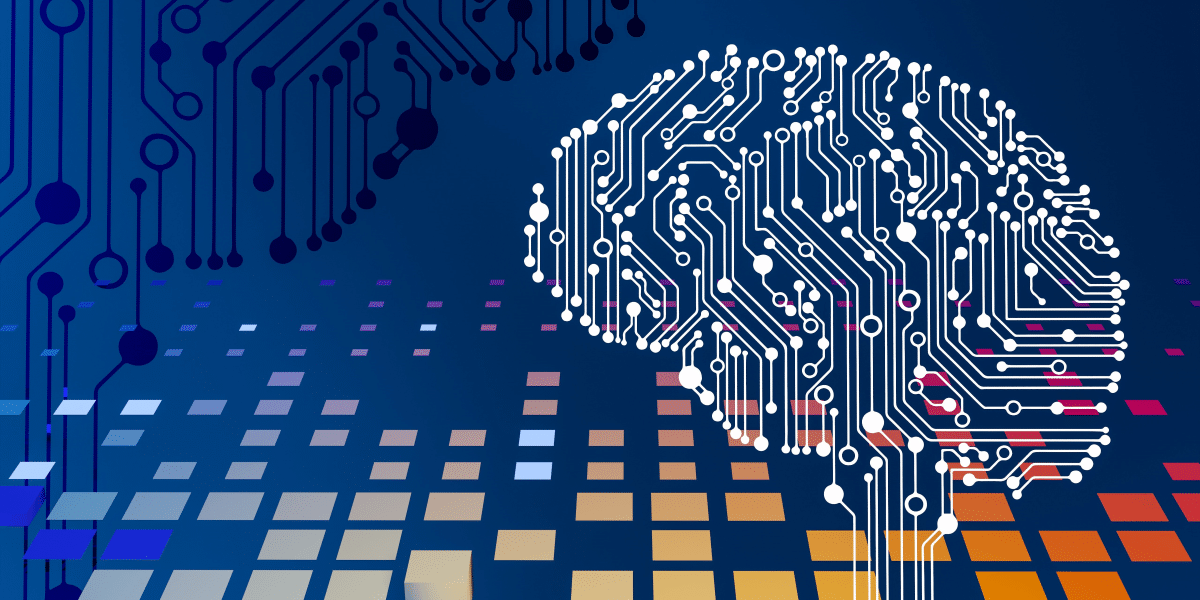Welcome to the fascinating world of artificial intelligence (AI) — a field that combines the structured world of computer science with machine learning. Programming AI is a challenging but rewarding experience, one that opens the door to a future where technology and human intelligence converge to solve complex problems. The journey begins with a deep understanding of the basic principles and the right approach.
Programming Languages and Artificial Intelligence Software
At the very core of how to program AI is the choice of programming language. Popular programming languages such as Python, Java, and C++ are often the most popular choices due to their extensive libraries and frameworks that support AI development. AI software development requires not just a fundamental grasp of these languages but also an understanding of specific AI libraries and tools that can facilitate the development process.
The Heart of AI: Machine Learning and Neural Networks
Machine learning, a subset of Artificial Intelligence I technology, empowers computers to learn from and interpret data without being explicitly programmed for every single task. It uses algorithms, modeled somewhat on the human brain’s neural networks, to parse data, learn from it, and make decisions.
The training process is essential for building AI systems that can perform a particular task, such as computer vision or speech recognition.
Data Science: The Fuel for AI
Data science and AI go hand in hand. High-quality data is the lifeline of any AI model — without it, even the most sophisticated algorithms can’t function correctly. This is why the process of data cleaning, data augmentation, and preparing data is so crucial. Structured data fed into machine learning algorithms is what leads to accurate predictions and the successful operation of AI systems in real-world applications.
Building the Foundations of Your AI System
The Blueprint: Developing AI Systems
When it comes to developing Artificial Intelligence systems, the first step is to understand the problem you are trying to solve. Problem identification sets the stage for all subsequent decisions — from choosing the right data to selecting the AI algorithms that will drive your system.
Building Artificial Intelligence systems is a complex process that involves a series of intellectual tasks, each requiring a deep understanding of both the technology and the specific challenges it aims to address.
Crafting AI Models: From Theory to Practice
An AI model is the manifestation of your AI system’s ability to perform a specific task. Developing different models requires a step-by-step guide that begins with selecting the right algorithms and ends with a robust testing phase to evaluate the model’s performance. This phase ensures that your AI can make ethical considerations, handle new data, and provide value in real-world scenarios.
Data: The Right Data for the Right Task
The adage ‘garbage in, garbage out’ is particularly apt in AI development. The right data, meaning high-quality, relevant data, is critical for training AI models effectively. Collecting data is just the beginning; preparing this data to reflect the complexities of the environment your AI will operate in is a task that requires both technical skill and a strategic mindset.
Steps to Build an AI
Laying the Groundwork with AI Software
The journey to build an AI begins with the right tools. AI software encompasses a broad range of applications, from simple development environments to complex platforms designed for specific AI technologies. Selecting the AI software that aligns with your Artificial Intelligence project’s goals is a critical first step.
Machine Learning Algorithms and Their Role
Machine learning algorithms are the essence of your AI model. These algorithms can range from simple regression models to complex deep learning networks, each suited to different types of data and tasks. Understanding these algorithms and how to apply them is a vital step in your AI development journey.
Training and Testing Your AI
The training process involves feeding your AI model with training data, allowing it to learn and adapt. This phase is followed by rigorous testing to ensure that your AI can make accurate predictions and operate effectively within its intended environment.
The Foundation of AI Programming
Programming AI is a journey that starts with a basic understanding of the most popular programming languages and a solid grasp of machine learning fundamentals. As we progress, we’ll delve deeper into the intricacies of AI models, the importance of data quality, and the nuances of developing intelligent systems that can perform specific tasks.
Natural Language Processing and User Interface Design
Natural Language Processing (NLP) stands at the crossroads of AI and linguistics, representing one of the most exciting and challenging areas of AI development. By simulating the human brain’s ability to understand language, NLP enables AI systems to interpret, generate, and learn from human speech and text. Implementing NLP in your AI system revolutionizes how users interact with your technology.
From chatbots to language translation services, NLP is a cornerstone of modern AI applications that require a nuanced understanding of human language.
User Interface: The Bridge Between AI and Humans
The user interface (UI) of an AI system is more than just a collection of screens and buttons; it’s the means by which users experience and interact with the technology. A well-designed UI is crucial for the successful operation of AI systems, as it translates complex AI processes into understandable and actionable insights for the user.
Whether you’re building an AI system for data analysis or customer service, the UI needs to be intuitive, responsive, and, most importantly, aligned with the user’s needs.
Artificial Narrow Intelligence
Artificial Narrow Intelligence (ANI) represents AI systems designed to handle a single task or a set of closely related tasks. Unlike its more advanced counterparts aspiring towards artificial general intelligence, ANI excels in specific domains, such as facial recognition or self-driving cars.
When you set out to build an AI system with ANI, you’re focusing on perfecting performance in a narrowly defined area, which can be a great starting point for any Artificial Intelligence project.
Designing AI Systems
Building an AI system with a focus on ANI requires a detailed understanding of the task at hand and the specific parameters that define success. It’s about fine-tuning your AI model to handle the particular complexities of a single intellectual task. The development process for ANI systems may involve training on structured data as well as unstructured data, ensuring the AI can operate in varied real-world conditions.
Data Scientists: The Navigators of AI’s Sea of Data
Data scientists are tasked with navigating the vast sea of data, and organizing and interpreting it in ways that are meaningful for AI models. They draw on expertise in statistics, machine learning, and domain knowledge to prepare the right data for training AI systems, ensuring the quality and relevance of the information used to inform AI operations.
The Human Brain: Inspiration for AI
The human brain has long served as an inspiration for AI development. Its intricate network of neurons and its ability to learn and adapt has been mirrored in the design of neural networks and machine learning algorithms.
Understanding how the human brain processes information can provide valuable insights into how to program AI to perform complex tasks, making it an important area of study for anyone looking to develop their own AI system.
The Practical Aspects of AI Development
Artificial Intelligence Project
Starting your own Artificial Intelligence project can seem daunting, but it can be a rewarding experience with the right approach. It begins with a clear definition of the project’s goals and scope, followed by an assessment of the available resources and skills.
Whether it’s developing an AI for predictive analytics or creating a tool for analyzing unstructured data, the key is to start with a solid foundation in both theory and practice.
The Process to Build an AI System
First, you must gather and prepare high-quality data, which will serve as the foundation for training your AI model.
Next, you choose the appropriate AI algorithms and machine learning techniques that align with your project’s objectives.
Then, you move into the training and testing phase, where your AI model will learn to perform the task at hand.
Finally, you refine the user interface and polish the AI operation mechanisms to ensure that the system is user-friendly and efficient.
The Path to Building Your AI
Building your own AI system is a journey that blends the science of machine learning with the art of user experience design. By leveraging natural language processing and focusing on artificial narrow intelligence, you can create AI solutions that are both powerful and specialized. With data scientists guiding the AI development process, inspired by the complexity and adaptability of the human brain, the AI systems of tomorrow are within our grasp today.
The Lifeblood of AI: High-Quality Data
High-quality data is the lifeblood of any AI system. The development process starts with identifying the right data — data that is clean, relevant, and diverse enough to train your AI models effectively. This data must accurately reflect the complexities and nuances of the real-world scenarios in which the AI will operate.
Whether it’s structured data from databases or unstructured data from images and natural language sources, the success of an Artificial Intelligence project hinges on the quality of the training data.
Data Scientists: The Craftsmen of AI Precision
Data scientists are akin to craftsmen in the world of AI. They shape the raw material — data — into a refined product that’s ready for the AI to use. The professionals understand how to treat different types of data, whether it’s preparing structured data for a straightforward analysis or wrangling unstructured data into a format that machine learning algorithms can understand.
AI Operation
Building: Laying the Groundwork for an AI System
Building an AI system is a complex process that requires a foundational understanding of both the technology and the task at hand. In the building phase, developers must carefully select the right machine learning algorithms and AI technologies that are best suited for their specific project. This stage is critical, as it sets the stage for how the AI model will learn and adapt to perform its designated task.
Training: Teaching AI to Think
The training process is where the AI model begins to take shape. Using the high-quality data prepared by data scientists, the AI learns to recognize patterns, make decisions, and predict outcomes. This phase is iterative and requires continuous refinement to ensure the model performs well.
Data scientists and developers work closely to fine-tune the model’s performance, relying on a mixture of mathematical instructions and deep learning techniques to improve accuracy.
Deployment: Bringing AI into the Real World
Once an AI model is trained and tested, the next step is deployment into a production environment. Deploying an AI system requires a thorough understanding of the user interface and the operational needs of the system. Deployment is a crucial step as it marks the transition from a project to a functional AI solution capable of handling real-world tasks.
Artificial Narrow Intelligence: Mastering Specific Tasks
Artificial narrow intelligence (ANI) represents AI systems that are experts in a specific domain. ANI systems are designed to perform a particular task, such as facial recognition or language translation, with a high level of proficiency. When building an AI system with ANI, the focus is on creating an intelligent system that can outperform humans in its specialized area.
The Pursuit of Artificial General Intelligence: A Longer Horizon
Artificial General Intelligence (AGI) remains the holy grail of AI development. It represents the ability of an AI system to understand, learn, and apply knowledge in a way that is indistinguishable from human intelligence. While AGI is still a work in progress, each AI project contributes to the collective understanding and development of this ambitious goal.
Ethical Considerations in AI Development
As AI systems become more integrated into our lives, ethical considerations become increasingly important. AI developers must be vigilant about designing systems that are not only effective but also fair and unbiased. Ethical AI involves considering the impact of AI technology on society, ensuring privacy, and maintaining transparency in AI operations.
The Continuous Learning Paradigm
AI is not a static field; it requires continuous learning and adaptation. AI systems must be designed to evolve over time, incorporating new data and learning from their experiences. This paradigm ensures that AI systems can remain relevant and useful as the world around them changes.
The Art and Science of AI Development
Programming AI is both an art and a science. It requires a combination of technical expertise, strategic thinking, and ethical consideration. Whether you’re building an AI system from scratch or integrating AI technologies into existing systems, the journey is a rich and rewarding one. With each step, we move closer to creating intelligent systems that can transform our world for the better.
Frequently Asked Questions
How can I program my own AI?
To program your own AI, start by learning a programming language well-suited for AI, like Python, and understand key AI concepts and machine learning algorithms. Then, use AI libraries and frameworks to develop and train your models on relevant data for the tasks you want your AI to perform.
Is it possible to program AI?
Yes, it is possible to program AI using various programming languages and tools designed for machine learning and data processing, alongside a structured development process involving the design, training, and deployment of AI models.
What program do you use for AI?
For AI programming, developers commonly use Python due to its rich ecosystem of AI libraries like TensorFlow, PyTorch, and Scikit-learn. Programming language (R, Java, and cloud-based AI service) is widely used depending on the project requirements.
















